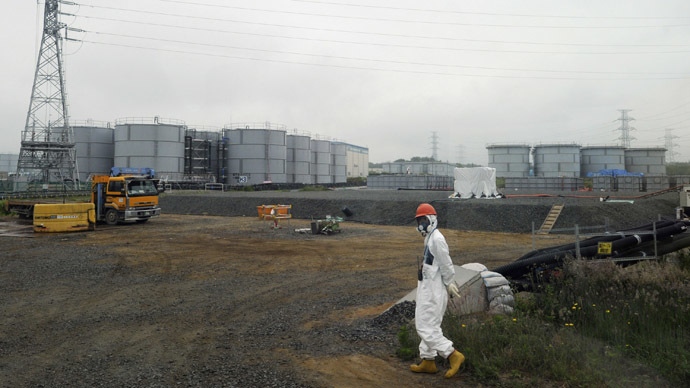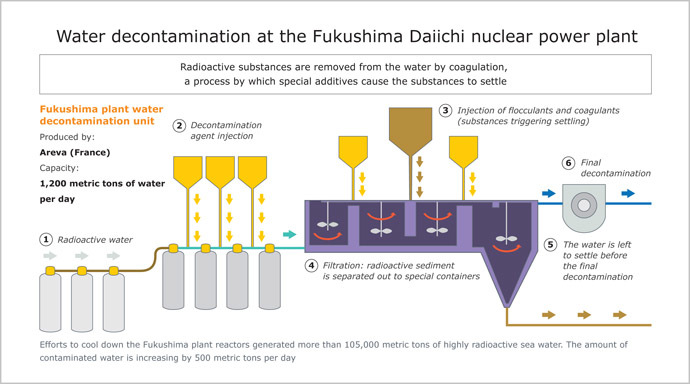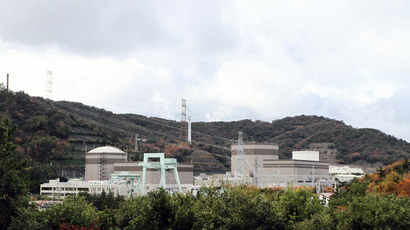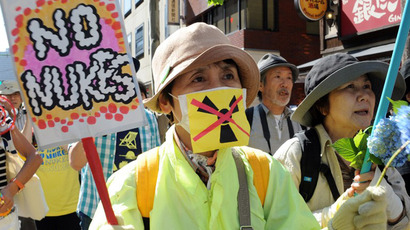360 liters of radioactive water leaked from Fukushima plant – TEPCO

At least 360 liters of radioactive water have leaked from a desalination unit at the Fukushima nuclear plant in Japan, TEPCO has revealed. Earlier, elevated levels of cancer-causing radioactive isotope were discovered in the plant’s groundwater.
Tokyo Electric Power Co (TEPCO), the owner of the wrecked plant, said it had suspended operations at the desalination unit early Friday after the leak was detected, Japan’s Kyodo news agency reported.
The affected unit is used to remove salt from contaminated water after radioactive materials have been filtered out.
The leaked water is being contained within the complex, TEPCO added. The company did not reveal precise radiation levels, but confirmed that levels in the surrounding areas had not significantly changed.

The new leak is the latest in a series of problems faced by the Fukushima Daiichi Nuclear Power plant. The facility suffered a reactor meltdown and released radiation following the 9.0-magnitude Tokohu earthquake – the most powerful recorded earthquake to ever hit Japan – which struck off the coast of the country on March 11, 2011.
The earthquake unleashed a tsunami with waves of up to 14 meters high (the plant was designed to withstand up to 5.7-meter waves) that knocked out the emergency generators required to cool the reactors, causing a meltdown. The substances released in the aftermath of the meltdown were not absorbed by the soil, and have trickled underground.
On Wednesday, TEPCO revealed test results showing levels of cancer-causing radioactive isotope strontium-90 in the groundwater at 30 times the allowable rate, along with tritium at around eight times the permitted level.
Another discharge of contaminated water was discovered in the beginning of June, and radioactive caesium was detected in groundwater flowing into the plant, contradicting an earlier finding that contamination levels around the facility were negligible.
Earlier in April, leaks were also discovered in the plant’s underground storage tanks, prompting TEPCO to speed up the construction of stronger above-ground containers.
About 400 tons of groundwater flow daily into the reactor buildings, where it is mixed with the highly contaminated water used as coolant for the melted fuel. The contaminated groundwater is thought to be contained by the plant’s concrete foundations and steel sheets, with gaps plugged by a material known as ‘liquid glass’ that solidifies to prevent the flow of contaminated groundwater.
The power company is seeking approval for its plan to dump 100 tons of groundwater a day from the plant into the sea, which requires the consent of local fishermen, who strongly oppose the idea.














